Top 8 PPC Marketing Mistakes to Avoid in 2023

PPC marketing is like a game of digital chess. Strategy, skill, and a dash of creativity can catapult you to the top search engine result pages (SERPs) and capture your target audience’s attention.
Every click is a high-stakes gamble, and success is but a bid away!
But let’s be honest: PPC is not for the faint of heart. With the landscape growing increasingly competitive by the minute, it’s easy for even the most experienced marketers to fall prey to costly mistakes. One wrong move, and your ad budget can vanish like a magician’s rabbit, leaving you scratching your head and wondering what went wrong.
Signing up for PPC marketing services is the first step, but that doesn’t mean it’s time to call it a day, cancel the rest of the magic show altogether, and head home.
Once you’ve partnered with a PPC marketing services agency, you must do your due diligence, sneak the rabbit back in the hat, and put on a show that earns a roaring round of applause.
In this blog, we’ll get you there. Let’s take a closer look at the top PPC mistakes in 2023. Where does it all go wrong? How can you undo the damage? And what’s the best preventative plan? We’re breaking it all down!
Wait, What Is PPC Marketing to Begin With?
Before we jump into the deep end of the pool, let’s dip our toes into the shallow waters and warm up first.
PPC (pay-per-click) marketing is a digital marketing strategy that operates around the simple and smart logic of only making a payment when someone clicks on your ad. Think of it as a grand auction where you bid for prime real estate on search engines like Google or social media platforms like Facebook!
Here’s how this works.
Let’s say a web user runs a Google search for the perfect pair of sneakers online. They type “cool sneakers for men” in the search bar and receive a ton of results.
The first few results often feature ads. In this case, Google fetches ads from the top sneaker companies.
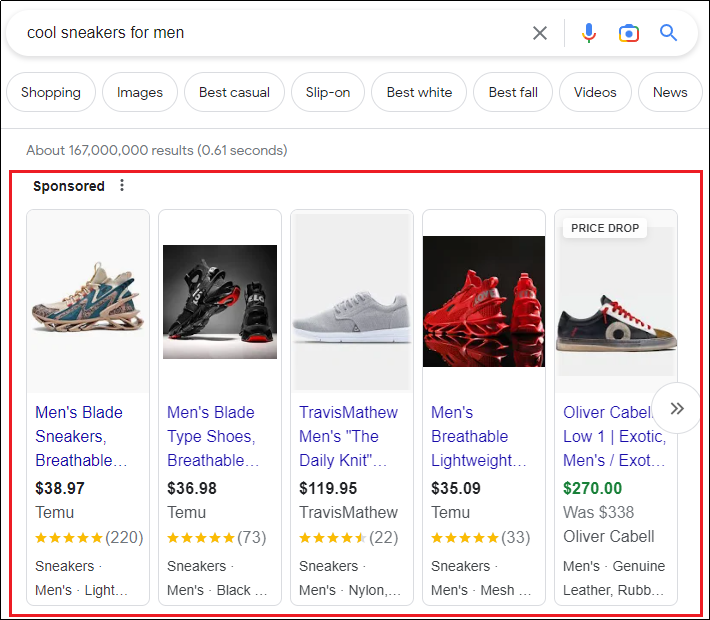
These brands are all vying for web users’ attention (and wallets). They’ve strategically placed PPC ads to ensure their products are front and center when web users are in the mood to shop.
Here’s the thing, PPC isn’t just for big brands; it’s also a versatile tool for small to medium-sized businesses that want to boost their online visibility, drive traffic, and increase conversions.
From the mom-and-pop bakery down the street promoting their scrumptious pastries to the hip new software startup looking to make a splash, every business can benefit from the PPC magic.
As long as you get things right and avoid PPC pitfalls.
Which reminds us, we have a lot to dig into. Let’s get right to it.
Mistake #1: Ignoring the Power of Negative Keywords
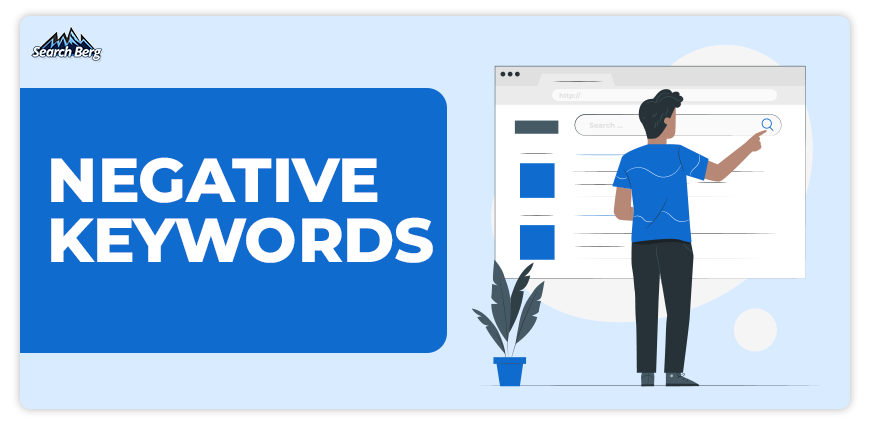
Negative keywords are the unsung heroes of the PPC world. They’re like the bouncers at an exclusive club, ensuring that only the most relevant traffic enters your digital party. By adding negative keywords to your PPC marketing campaign, you’re telling search engines which search queries you don’t want your ads to show up for.
This is a great way to filter out irrelevant traffic, improve your click-through rate (CTR), and ultimately get more bang for your buck.
Let’s say you’re a high-end fashion retailer specializing in luxury handbags. You wouldn’t want your ads to appear when someone searches for “cheap handbags” or “discount handbags”. In this case, you would add “cheap” and “discount” as negative keywords, ensuring that your ads only show up for search queries that match your target audience’s preferences.
Let’s consider another example. Imagine you own an online store that sells eco-friendly, reusable water bottles. You want to target customers who are looking for sustainable alternatives to single-use plastic bottles.
However, you notice that your ads are showing up for search queries like “plastic water bottles” and “disposable water bottles.” To prevent your ads from appearing in these irrelevant searches, you add “plastic” and “disposable” as negative keywords.
How to Avoid This Mistake
1. Conduct Thorough Keyword Research
Before launching your campaign, research and identify potential negative keywords. Use tools like Google Keyword Planner to explore search queries related to your target keywords and spot irrelevant terms that could trigger your ads.
2. Analyze Your Search Term Report
Regularly review your search terms report in your Google Ads account to identify search queries that are triggering your ads. Keep an eye out for irrelevant or low-performing terms and add them as negative keywords.
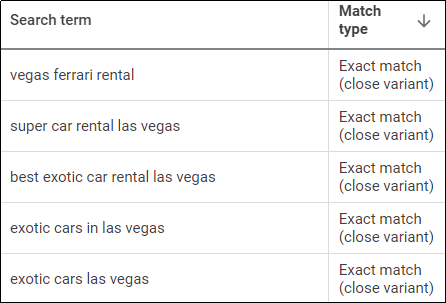
3. Leverage Match Types
Understand the different negative keyword match types (broad, phrase, and exact) and how they impact your campaign. Choose the appropriate match type when adding negative keywords to optimally filter out irrelevant search queries.
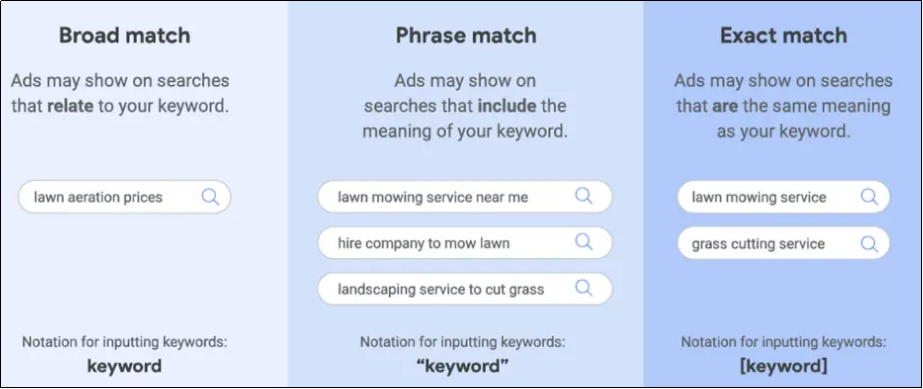
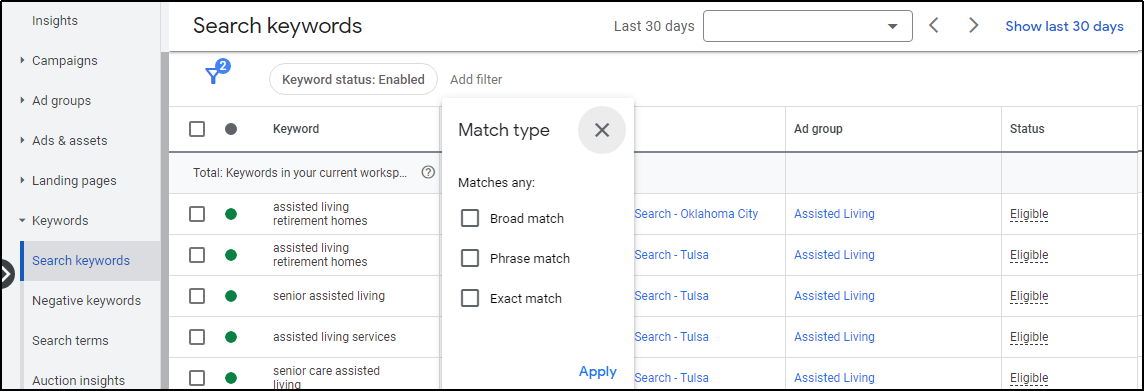
Organize your negative keywords into shared lists that can be applied across multiple campaigns or ad groups. This will help you maintain a clean and consistent negative keyword strategy. You’ll end up saving a lot of time and energy in the long run.
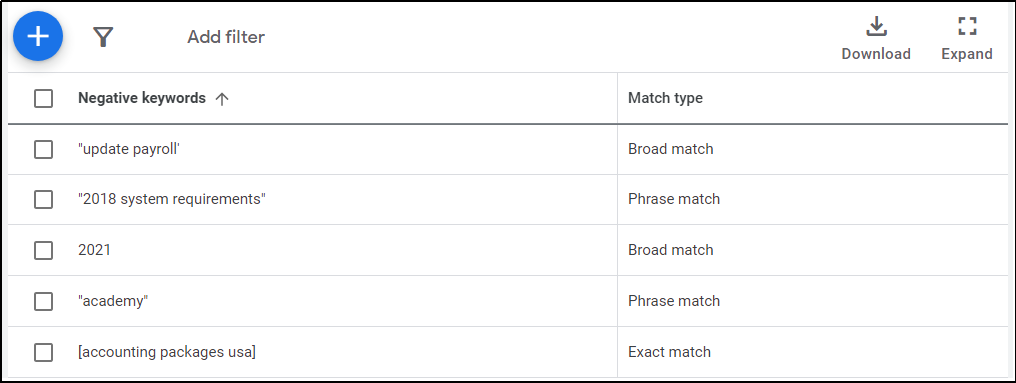
5. Monitor and Refine
Continuously track your campaigns’ performance and stay vigilant for new irrelevant search queries. Update your negative keyword lists as needed to maintain optimal results. Keep in mind that PPC is an ongoing process that requires constant optimization and adjustment.
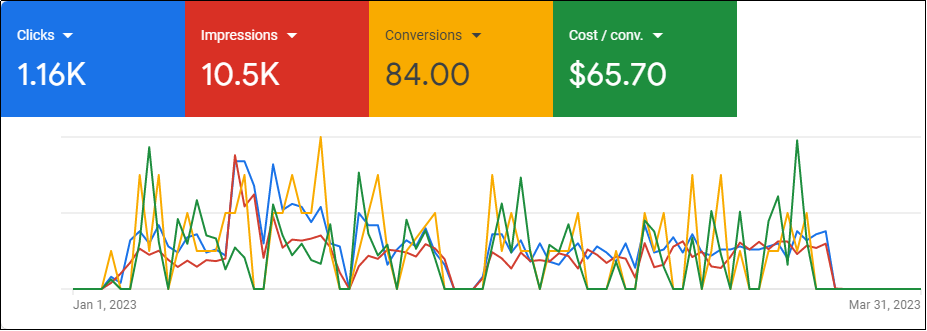
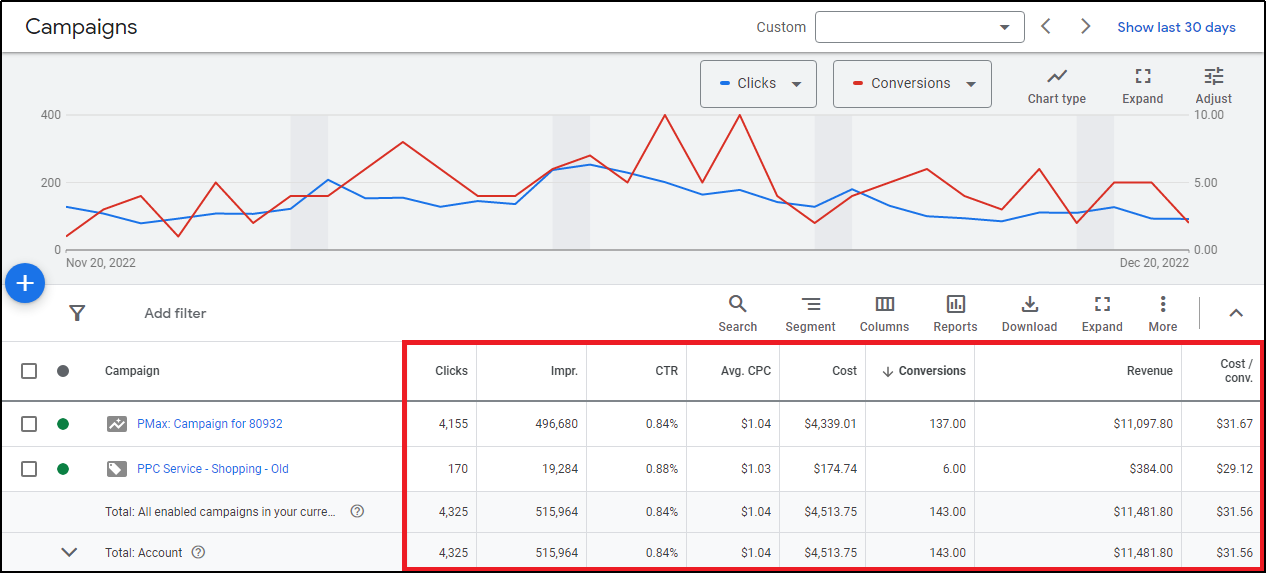
Mistake #2: Forgetting About Ad Extensions
If you’re not utilizing ad extensions, you’re missing out on the golden opportunity to supercharge your ad’s performance. This is easily one of the most damaging PPC mistakes in 2023.
Ad extensions are like the cherry on top of your PPC sundae. They add extra information and pizzazz to your ads, making them more enticing and helpful to potential customers. By neglecting ad extensions, you’re missing out on valuable opportunities to boost your ad’s click-through rate (CTR) and overall performance.
Types of Ad Extensions
1. Sitelink Extensions
Sitelink extensions provide additional links to specific pages on your website, allowing users to access the content they’re interested in directly. This not only improves user experience but also increases the likelihood of conversions.
For instance, if you enter “IT services near me” in the Google search bar, some ads may include additional subpages.
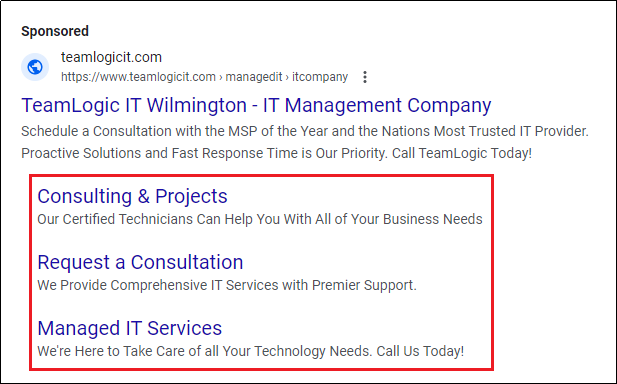
This helps users decide where they would like to go. Instead of visiting the generic home page, they’ll end up visiting a more specific page that helps them take the precise action they had in mind.
2. Callout Extensions
Callout extensions help you showcase unique selling points, offers, or services that set your business apart from competitors. They appear as short, non-clickable text snippets in your ad and add extra value to your message. Callout extensions are always under 25 words.
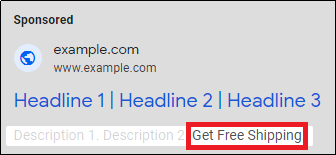
3. Call Extensions
Call extensions display your phone number directly within the ad, making it easy for users to contact your business. This is especially useful for mobile users who can click the number to initiate a call immediately.
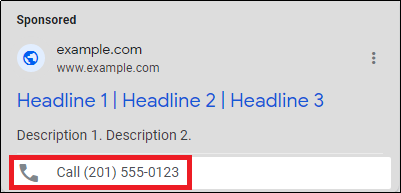
4. Structured Snippet Extensions
These extensions allow you to display a list of specific attributes or categories related to your products or services. Structured snippets provide additional context, helping users understand the scope of your offerings. They’re always identified by colons.
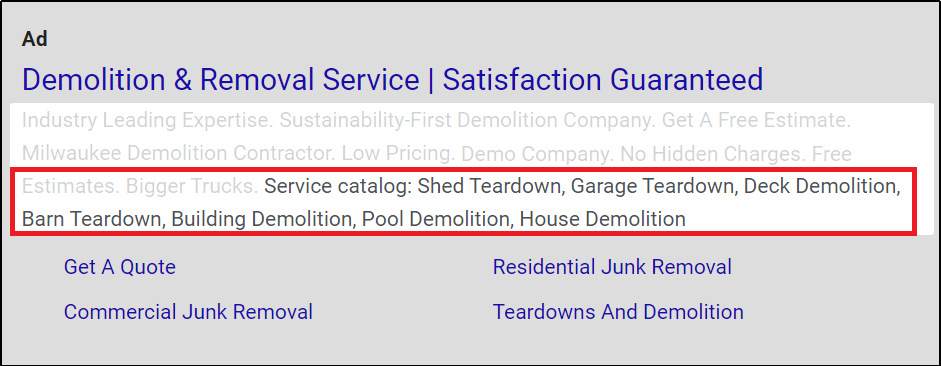
In this example, we looked for the best hiking shoes on Google. The top paid search result from Amazon displayed a sweet structured snippet. When web users read this, they’ll feel more confident going through with their purchase owing to the flexible return policy.
5. Price Extensions
Price extensions display a range of products or services along with their respective prices, giving users a quick overview of your offerings and their costs. This information will help users make budget-friendly decisions while you, as a business, will walk away with sweet conversions!
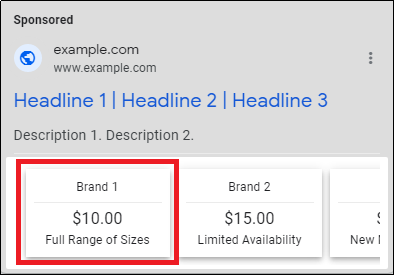
6. App Extensions
App extensions provide a direct link for users to download or open your app. This can help increase app installs and user engagement. App extensions are perfect for businesses with mobile apps.
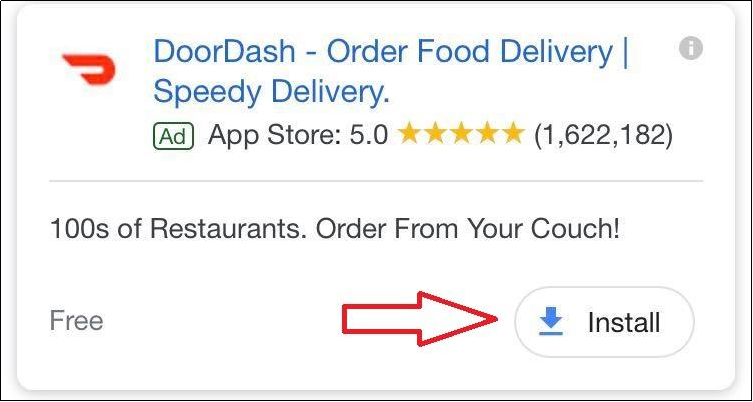
Recommended Service: Search Berg’s Mobile App Development Services
7. Location Extensions
Location extensions display your business’ address, phone number, and distance from the user’s location (if applicable). This is particularly helpful for businesses with physical locations as it encourages users to visit in person.
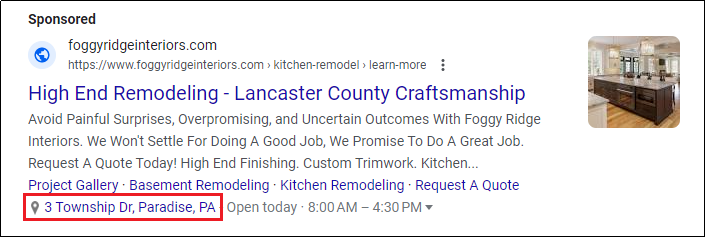
For instance, if you look for “home remodeling services,” there’s a high chance the ad results will include the address or phone number of the business. In this case, the address is conveniently revealed.
8. Affiliate Location Extensions
Affiliate location extensions help businesses promote their products or services available at third-party retailers. This extension displays the address and distance of the nearest store selling your products, making it easier for users to find a convenient location to make a purchase.
9. Seller Ratings Extensions
Seller ratings extensions display your business’s overall star rating based on customer reviews from various sources. This helps build trust and credibility with potential customers, increasing the chances of them clicking on your ad and making a purchase.
If you look for “house flipping companies” on Google, the paid ads may include ratings to help you determine where potential companies stand. Here’s an example:

10. Image Extensions
Image extensions add a visual element to your ads by including relevant images alongside text. These images showcase your products or services and make your ads more eye-catching and engaging.
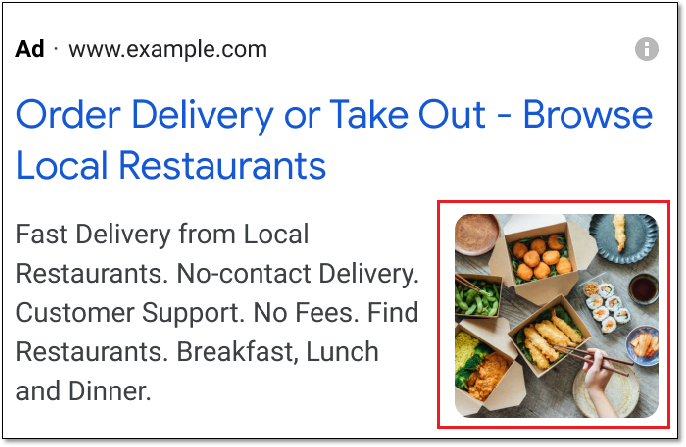
11. Lead Form Extensions
Lead form extensions enable users to submit their contact information directly from your ad, making it easier for potential customers to express interest in your products or services. This can help increase lead generation and improve conversion rates.
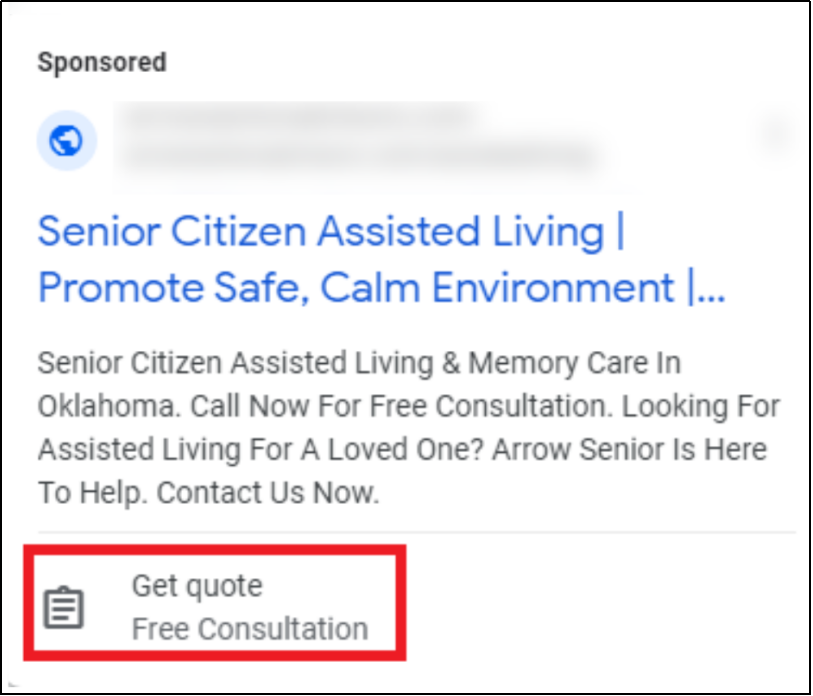
12. Promotion Extensions
Promotion extensions highlight special offers, discounts, or promotions in your ads. This can make your ad more enticing to potential customers and encourage them to click on your ad to take advantage of the deal.
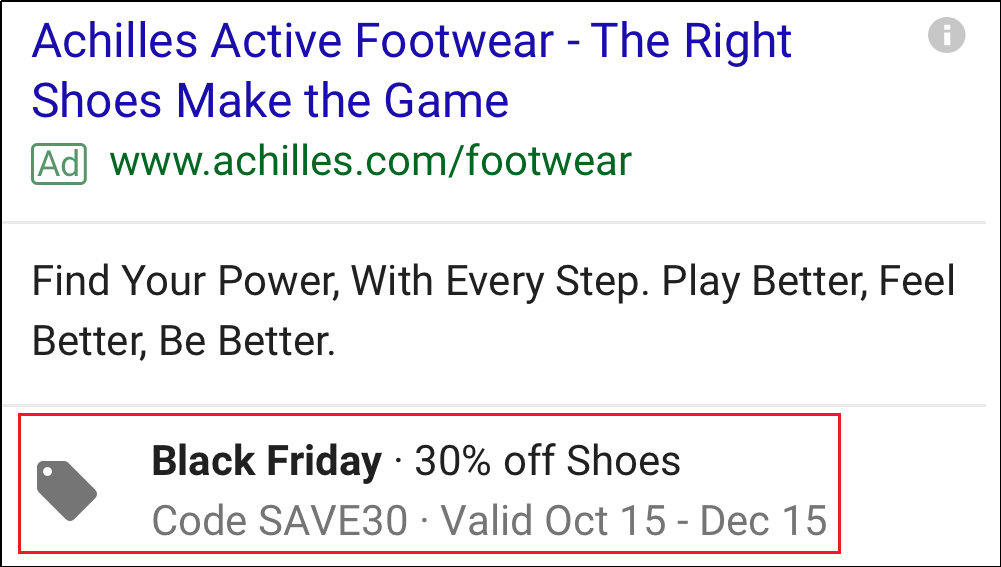
How to Avoid This Mistake
1. Identify Relevant Extensions
Review different ad extensions and determine which ones are most suitable for your business and campaign goals. Since different extensions serve different purposes, choose extensions that best align with your objectives. Work with PPC campaign marketing experts to identify the right extensions for your business.
2. Add Value to Your Ad
Use ad extensions to provide useful information or options that complement your ad’s message. The goal is to make your ad more attractive and relevant to users. This will help you earn more clicks and conversions!
3. Monitor and Optimize
Regularly review your ad extensions’ performance to identify areas for improvement. Adjust and refine your extensions as needed to maximize their impact on your campaigns.
Mistake #3: Overlooking the Importance of Landing Page Experience

Let’s say you’ve crafted the perfect PPC ad with an irresistible headline, a compelling call-to-action (CTA), and all the right ad extensions. Web users are clicking through—only to land on a page that loads slowly, lacks visual appeal, and fails to deliver what the ad promised.
This won’t just disappoint users; it’ll leave them feeling frustrated and enraged.
At a time when attention spans are shorter than ever, you can’t afford to make such critical mistakes. Your landing page must be as spectacular as your ads; this is non-negotiable.
A top-notch landing page experience can mean the difference between a potential customer converting or bouncing right off your site and landing on another.
How to Avoid This Mistake
1. Deliver on Your Ad’s Promise
Your landing page must align with your ad’s messaging and offers. If your ad promises a discount, make sure the landing page clearly showcases the deal. And if your ad mentions that you provide free parking, make sure you actually provide free parking.
A no-nonsense approach will help you convert and retain customers, not send them towards the nearest exit. Leave embellishments, exaggerations, and fake promises at home. Instead, give your audience exactly what your ad says!
When you maintain consistency between your ad and landing page, you’ll provide a seamless experience to your audience and build trust. If you’re confused about achieving this harmonious balance, hire PPC services.
2. Design for Clarity and Ease of Use
Create a visually appealing, easy-to-navigate, and interactive landing page that highlights the most important information and guides users towards the desired action. Use clear headings, concise copy, and strategically placed CTAs to encourage more conversions.
3. Prioritize Speed
In 2023, patience is a rarity. While we wish people had more time on their hands, the fact of the matter is that everyone is busier than busy (and then some).
Optimize your landing page’s load time by compressing images, minimizing HTTP requests, and using a content delivery network (CDN). Once a web user is impressed by and interested in your ad, they shouldn’t have to endure a long wait to access the requested page.
If that happens, people will leave your site feeling annoyed. And the last thing you want to do is waste your audience’s time. A faster-loading page will help you reduce your site’s bounce rate and improve user experience.
Recommended Read: How to Optimize Your Landing Page for PPC Conversions
Mistake #4: Neglecting Mobile Experience
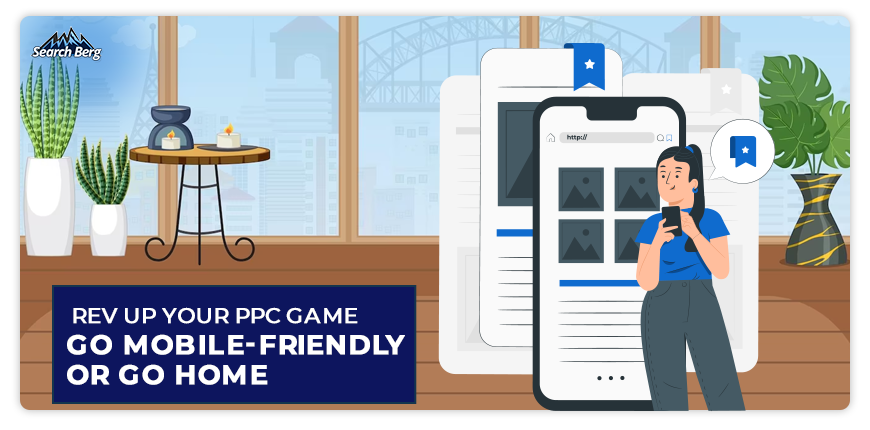
At a time when mobile devices have practically become an extension of our limbs, it baffles us that many businesses still haven’t fully embraced the importance of mobile-friendliness.
This isn’t just another strategy you should consider tossing into your digital marketing cart. Instead, it’s the star ingredient of your dish that you simply can’t do without. Just as you wouldn’t invite guests to a party and fail to provide snacks, you shouldn’t entice users with a catchy ad only to disappoint them with a less-than-stellar mobile experience.
Let’s consider some hypothetical scenarios to drive the point home.
Examples of Poor Mobile Experience
- Sue’s Shoe Shop: Sue’s desktop site is a visual feast, but on mobile, the text is so small that users need a magnifying glass to read it. The result? Frustrated customers and lost sales.
- Pete’s Pizzeria: Pete’s mobile site requires users to pinch and zoom to navigate the menu, leaving greasy fingerprints on their screens and driving them to find pizza elsewhere.
- Larry’s Laptop Emporium: Larry’s desktop site loads at lightning-fast speed, but his mobile site takes ages to load. As web users become increasingly impatient, they bounce before seeing what Larry has to offer.
- Todd’s Tech Store: While Todd’s desktop site is easy to navigate, his mobile site features buttons so small that users are constantly tapping the wrong ones. The outcome? A frustrating user experience and abandoned carts.
How to Avoid This Mistake
1. Embrace Responsive Design
Opt for a responsive website design that automatically adjusts your layout and content to fit various screen sizes and orientations. This is a great way to provide a seamless experience across all devices. You’ll keep both desktop and mobile users happy!
2. Optimize Images and Load Times
Compress images and use lazy loading techniques to speed up your site on mobile devices. Mobile users are notoriously impatient (we said what we said). A faster loading site will help you keep them engaged, not send them into a roaring fit.
Adapt your site navigation for mobile users by using a collapsible “hamburger” menu and large, easy-to-tap buttons. When your website is easy to navigate, web users will feel compelled to keep exploring your content.
4. Make Text Legible
Choose easily readable fonts and ensure the font size is large enough to read comfortably on mobile screens. No one wants to squint at their phone while trying to learn about your products or services!
5. Design Forms for Mobile
If your site includes forms, make sure they’re designed with mobile users in mind. Use larger input fields, dropdown menus, and buttons to make it easier for users to complete and submit forms on their devices.
Mistake #5: Failing to Track Conversions
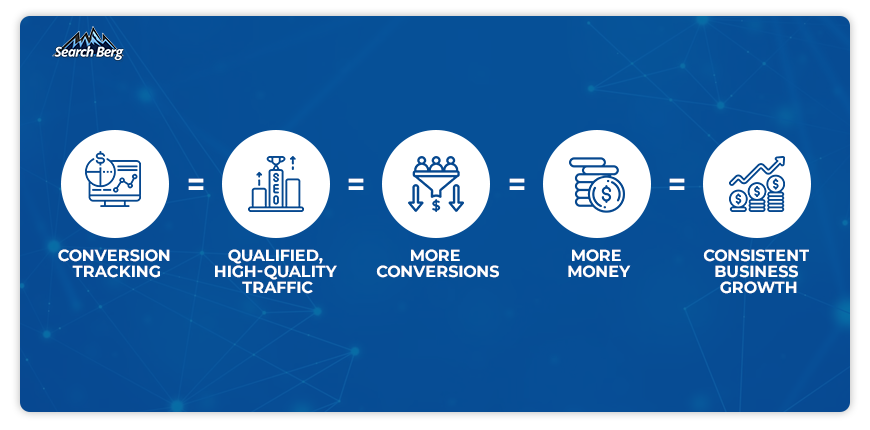
In the high-stakes world of PPC marketing, every click and conversion counts. Ignoring the power of conversion tracking is like trying to hit a bullseye with your eyes closed. Yes, you may get lucky once or twice, but long-term success will be elusive.
Track conversions with the help of PPC management experts and unlock the secrets of your PPC marketing campaign. Make informed decisions and chart a course to a lucrative and sustainable ROI.
Conversion tracking also provides insights into how users interact with your ads and move through the sales funnel. This is a great way to identify potential bottlenecks or areas where users may drop off.
Once you’re equipped with this critical knowledge, you can cleverly address these issues and create a smoother path to conversion.
How to Avoid This Mistake
1. Set Up Conversion Tracking
Use Google Ads or Search Berg’s PPC campaign marketing tools to set up conversion tracking for various types of conversions, including form submissions, sales, phone calls, and so on. This will help you gather data on which ads, keywords, and targeting options are most effective in driving conversions.
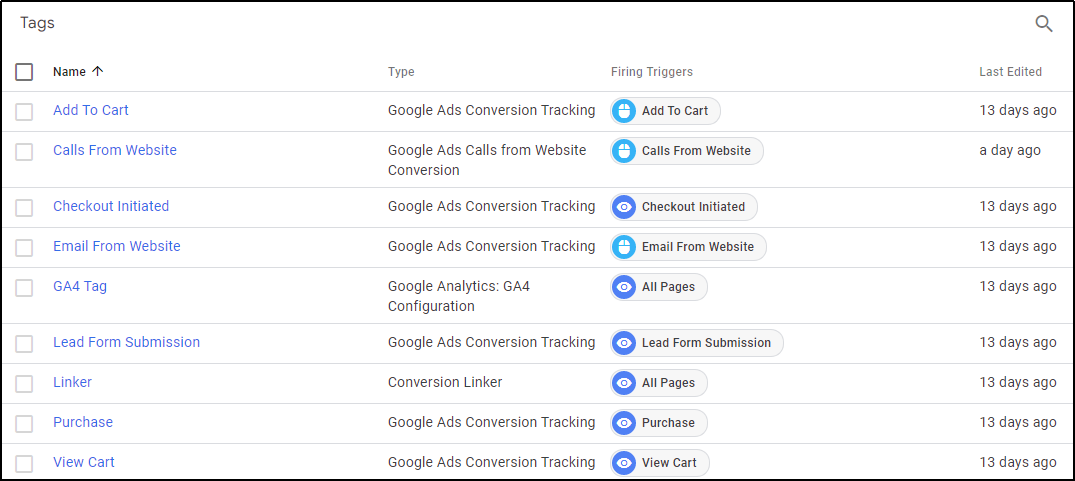
2. Track Multiple Conversion Types
Depending on your business and goals, track multiple types of conversions, including sales, sign-ups, and downloads. This will help you better understand the customer journey and optimize your campaign for different stages of the funnel.
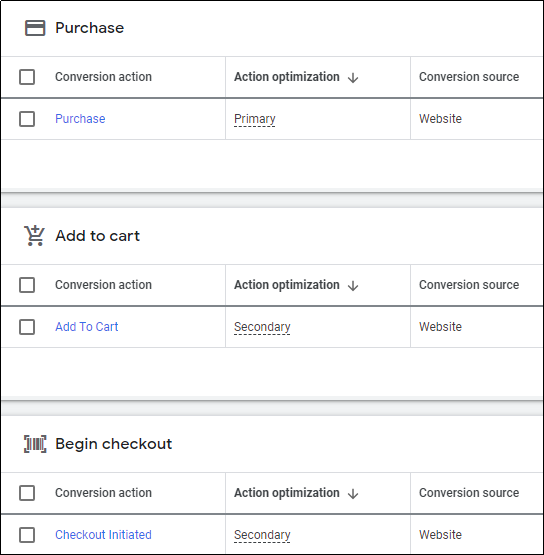
3. Use Call Tracking
Implement call-tracking solutions like call extensions with Google forwarding numbers or third-party call-tracking software. This is a genius way to track phone call conversions and gather valuable data on which ads and keywords are driving calls.

4. Analyze and Optimize
Frequently review your conversion data to identify trends, high-performing ads, and areas for improvement. Use this data to optimize your bidding strategies, ad creative, and targeting options for a sweeter return on investment.
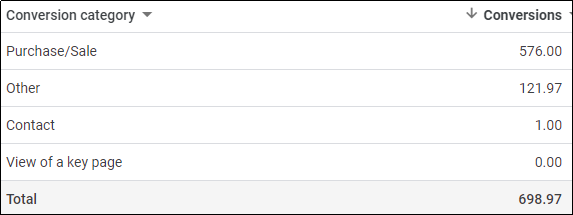
By setting sail with smart conversion tracking in your PPC toolkit, you’ll be able to navigate your way to PPC success with confidence and precision. You’ll know which ads are pulling their weight and which ones are just dead weights.
This insight will help you make data-driven decisions and steer your PPC ship towards a treasure trove of conversions! Need a hand? Search Berg’s affordable PPC marketing services are a call away.
Mistake #6: Setting and Forgetting Your Campaigns
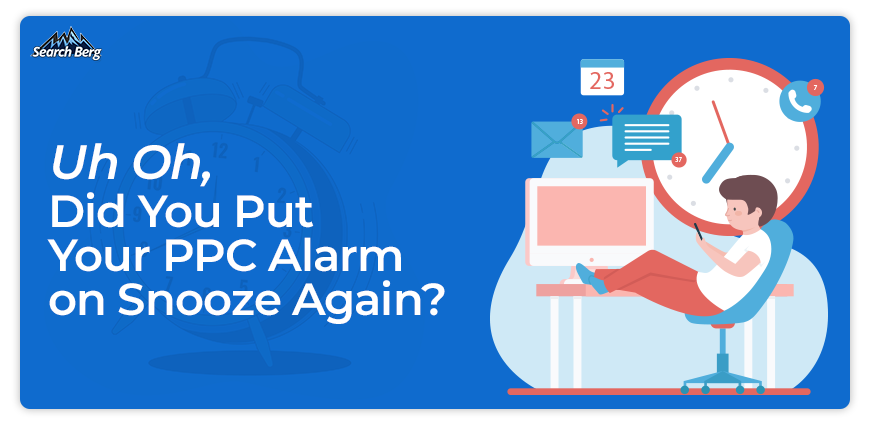
PPC marketing is not a set-it-and-forget-it game. Treating your PPC campaign like a slow cooker may be tempting, but it’s a recipe for mediocrity.
The digital marketing landscape is ever-evolving. Needless to say, your PPC knife should also remain sharp at all times. To truly succeed, continually monitor, analyze, and optimize your campaigns.
The Downsides of Setting and Forgetting Your PPC Campaigns
- Ad Fatigue Fiasco:You create a set of eye-catching ads, but you never update or refresh them. As time passes, your audience becomes increasingly desensitized to your ad creative, and your click-through rates begin to plummet.
- The Stagnant Keyword Catastrophe:You set up a PPC campaign with a great initial set of keywords but never revisit them. Over time, search trends change and new competitors enter the market. Your once-great keywords are now under performing, and you’re missing out on tempting opportunities to reach and convert your target audience.
- Budget Blunder:You allocate your budget based on initial assumptions, but you never adjust it based on actual performance data. You may be over investing in under performing ads or keywords while high-performing ones are left starving for ad spend.
How to Avoid This Mistake
1. Frequently Review and Update Your Keyword Strategy
Keep an eye on search trends and competitor activity to identify new keyword opportunities and refine your existing keyword list. Closely review your search term reports to discover high-performing long-tail keywords and negative keywords to refine your targeting efforts.
Recommended Service: Search Berg’s SEO Keywords Research Services
2. Refresh Your Ad Creative
Frequently update your ad copy and visuals to keep your ads fresh and engaging. Experiment with different headlines, CTAs, and ad formats to find the most powerful combination that drives conversions in hordes!
3. Monitor and Adjust Your Bidding Strategy
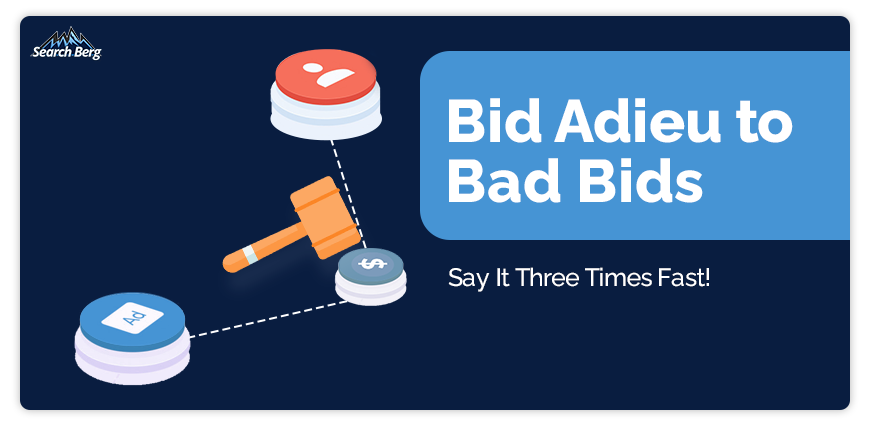
Analyze performance data to identify high-performing keywords and ad groups, and always allocate your budget accordingly. Adjust your bidding strategy based on factors like device, location, time of day, and audience demographics to maximize your ROI.
4. Stay Current with Industry Trends and Platform Updates
Stay informed about the latest PPC news, strategies, and platform updates to ensure your campaigns are infused with the latest features and best practices.
Mistake #7: Focusing Solely on High-Volume Keywords
In the quest for PPC marketing dominance, businesses often develop tunnel vision and hone in on high-volume keywords that promise a flood of traffic.
While this strategy seems like a surefire winner, it overlooks the hidden gems of the keyword world: long-tail keywords.
While these specific search terms may have lower search volumes, they’re primed for higher conversion rates due to their razor-sharp relevance. If you’re confused about what we mean, let’s consider some examples.
Examples of This Mistake in Action
- An online bookstore may focus on high-volume keywords like “bestselling books” but miss out on the opportunity to target niche audiences with long-tail keywords like “vegan cookbooks for beginners” or “mystery novels set in Victorian England.”
- A local artisanal chocolate shop may chase after high-volume keywords like “chocolate gifts” but fail to capitalize on the potential goldmine of long-tail keywords like “handmade chocolate truffles for anniversary” or “gourmet dark chocolate tasting box.”
- A custom-made furniture store may very well focus on high-competition keywords like “custom furniture”, but they may miss out on the benefits of targeting more niche, long-tail keywords like “bespoke wood dining table” or “handcrafted mid-century sofa.”
Catch our drift? As one of the most common PPC mistakes in 2023, this slip-up will prevent you from tapping into your niche audience and driving high sales.
How to Avoid This Mistake
1. Become a Keyword Detective
Use keyword research tools to uncover long-tail keyword opportunities that align with your industry and target audience. Don’t be afraid to dig deep; the most valuable keywords are often hiding in plain sight.
2. Understand Audience Intent
Analyze the search intent behind your targeted keywords to craft ad copy and landing pages that speak directly to your audience’s needs and desires. This level of personalization will give you a competitive edge in the world of PPC.
3. Don’t Let High-Volume Keywords Blind You
While it’s tempting to put all your eggs (read: resources) in the high-volume keywords basket, take a step back and assess your overall strategy. Are you sacrificing long-tail keyword opportunities that could deliver better ROI? Finding the right balance is key.
4. Stay Vigilant
Carefully review your keyword performance data to pinpoint high-converting long-tail keywords that may be flying under the radar. Once you’ve identified these hidden gems, optimize your bidding strategy to ensure you’re making the most of these valuable opportunities.
5. Create Tailored Ad Copy
When targeting long-tail keywords, create ad copy that specifically addresses users’ unique concerns or interests pertaining to these terms. The right level of customization will boost your ad revenue and ultimately improve campaign performance.
Examples of Long-Tail Keywords for PPC Success
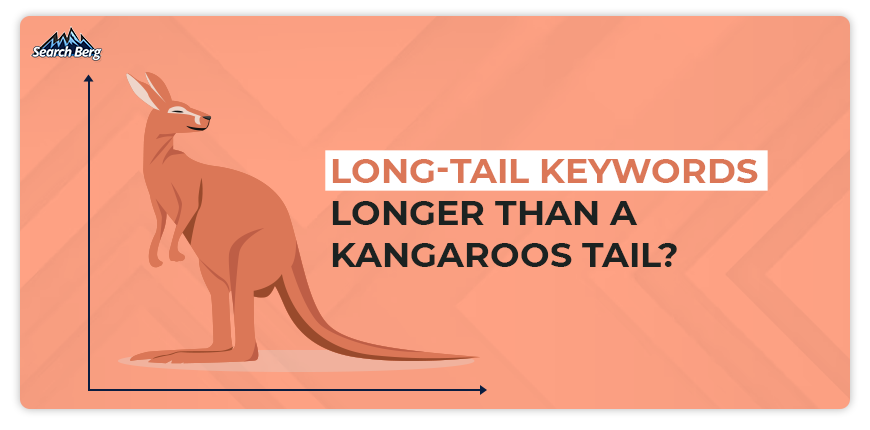
1. Travel Industry
- “affordable family-friendly hotels in Orlando”
- “romantic bed and breakfast in Napa Valley”
- “best scuba diving spots in Belize”
2. Health and Fitness
- “beginner-friendly yoga classes near me”
- “gluten-free meal delivery services”
- “home workout routines for seniors”
3. eCommerce and Retail
- “organic cotton baby clothes online”
- “noise-canceling headphones for studying”
- “vegan leather handbags on sale”
4. Real Estate
- “pet-friendly apartments for rent in Seattle”
- “modern lofts for sale in downtown Chicago”
- “co-working spaces with childcare facilities”
5. Home and Garden
- “eco-friendly landscaping services in Austin”
- “kitchen remodeling contractors in Denver”
- “indoor plants for low-light conditions”
6. Technology and Gadgets
- “wireless chargers for iPhone and Android”
- “budget-friendly gaming laptops for students”
- “smart home security systems with cameras”
You get the gist.
Mistake #8: Overlooking Seasonal Trends and Events
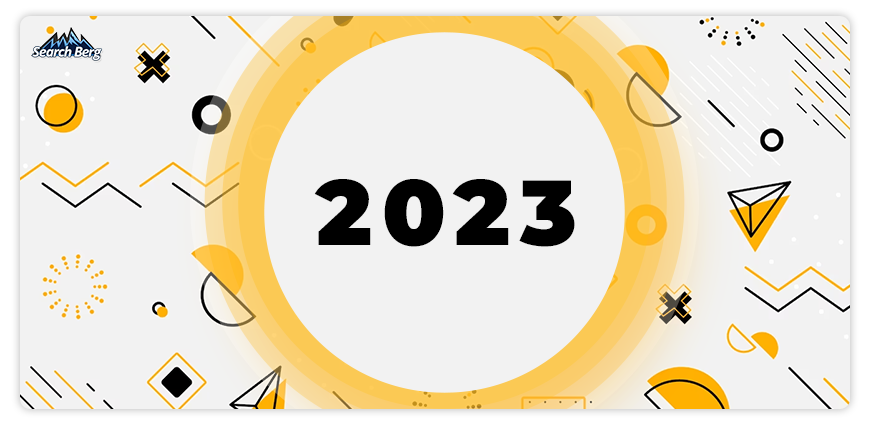
Just like the changing seasons, consumer behavior and search trends can shift dramatically throughout the year.
Businesses that fail to anticipate these fluctuations and adapt their PPC strategies accordingly can miss out on valuable opportunities to connect with their target audience.
Seasonal trends and events can drive significant changes in search volume and intent. If you want your PPC ship to sail, not sink, stay on top of these cycles.
Let’s consider some examples to understand the right way to jump on this bandwagon.
Examples
- A flower delivery service should be poised to capitalize on events like Valentine’s Day, Mother’s Day, and wedding season. How can they check this box off the list? By crafting targeted ad campaigns that appeal to users interested in sending bouquets and arrangements during these high-demand periods.
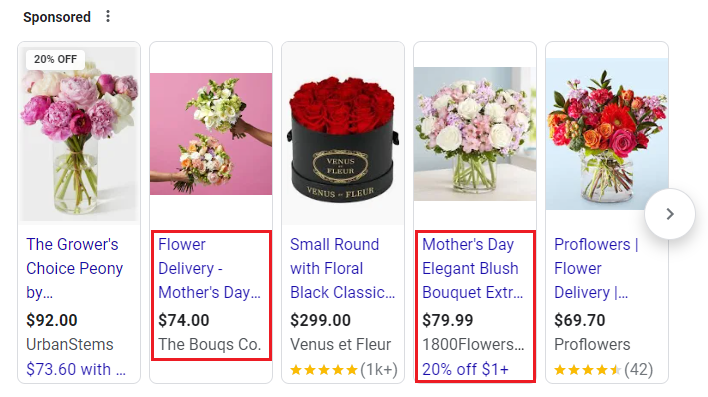
- A travel agency can miss out on potential bookings if they fail to adjust their PPC strategy for peak travel seasons, including summer vacations, spring break, or the winter holidays. Ad campaigns should be tailored to travelers’ specific interests and needs during these times.
- An eCommerce store that stocks winter gear should be prepared to ramp up its PPC efforts as temperatures drop. What’s a smart way to go about this? Targeting keywords like “winter jackets,””snow boots,” and “thermal gloves.”

- A tax preparation service that fails to increase their PPC spend and optimize their ad copy during tax season may find themselves missing out on a significant portion of potential customers looking for help with tax returns.
How to Avoid This Mistake
1. Stay Informed
Keep track of important dates, holidays, and seasonal trends in your industry. Research the key events and shifts in consumer behavior throughout the year to identify potential PPC opportunities. If you’re having trouble keeping abreast of the latest developments, hire a PPC marketing agency that will do the trick for you.
2. Create a Marketing Calendar
Develop a comprehensive marketing calendar that outlines your planned PPC campaigns for the year. This will help you stay organized and ensure you don’t miss any critical marketing opportunities.
3. Optimize Ad Copy and Keywords
As the seasons change and new events approach, tweak your ad copy and keywords to better target users searching for related products or services. For example, a swimwear retailer may switch from targeting “summer swimsuits” in June to “fall swimsuits” in September.
4. Adjust Your Ad Spend
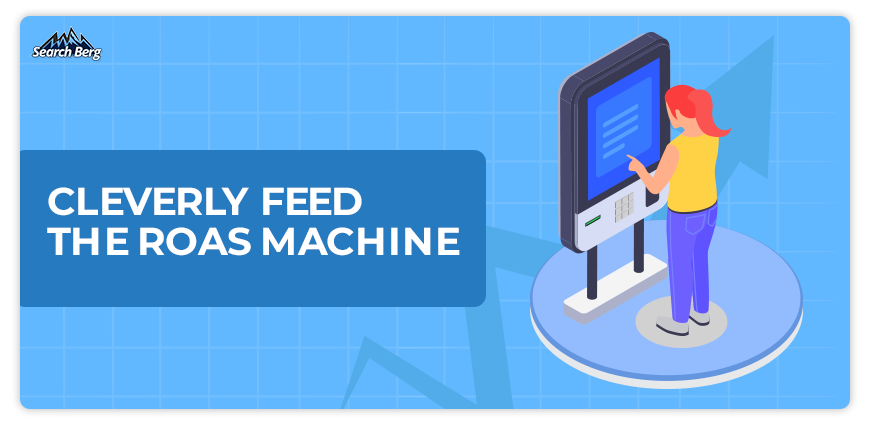
Be prepared to increase your PPC budget during peak seasons or events when competition for ad placements may be higher. This will help you maintain optimal visibility and capture a larger market share.
5. Analyze and Learn From Past Performance
Review previous PPC campaigns’ performance during seasonal trends and events to identify what worked well and what didn’t. Use this information to refine your strategy like a seasoned pro.
6. Test and Iterate
Run A/B tests on your ad copy, keywords, and bidding strategies during different seasonal periods to find the most effective approach. Continuously optimize your campaigns to ensure you’re getting the best possible return on your investment.
Recommended Read: A Simple Guide to Getting Started with PPC
Let’s Get the PPC Ball Rolling!
As the competition reaches an all-time high, new strategies and tricks enter the landscape, and everyone brings out their A game, you can’t afford to slow down.
Not a chance.
Instead of taking the PPC reins yourself and heading in the wrong direction, hire a PPC marketing services agency that knows what it’s doing.
Can’t find one? It’s sitting right under your nose.
At Search Berg, we firmly take the reins, steer your business in the right direction, and execute a smooth landing. Our PPC specialists help your business get seen by your target audience, earn more clicks, generate ample sales, and head towards consistent growth.
Sounds like a plan? Let’s get to work!
Explore our PPC marketing services to get started. If you have any questions, our team is always happy to help. It’s time to unlock the power of PPC and see what your business is capable of.












